
“His views of old Moscow, which are scientifically very faithful illustrations, are precious and in a purely artistic sense,” wrote Alexander Benois about the historical paintings of Appolinary Vasnetsov. Based on numerous archaeological, pictorial and written sources, his works became true historical and artistic documents.
The painting depicts a possible view of the Kremlin of Dmitry Donskoy from the Borovitsky gate before the invasion of Tokhtamysh in 1382. Kremlin-city, the first of four cities that formed ancient Moscow, became the first stone fortress in the northeast of Russia.
In those places where the important strategic roads approached the Kremlin, the most powerful and tallest towers were built. They arranged a gate with a passage to the Kremlin, which were closed with iron or oak branches. From the outside to the towers were attached deflecting tower-strelnitsy.
Of the Kremlin’s tower towers, Spasskaya, Nikolskaya, Troitskaya and Borovitskaya were the most important. This land, surrounded by a high brick wall with crenellations – the source, from where Moscow went. It originated on Borovitsky cape, its wedging angle between the two rivers – Moscow and Neglinnoy, where the pine forest earlier rustled, and today the Borovitsky tower rises. In the second half of the fourteenth century, the Grand Prince of Moscow, Dmitry Ivanovich Donskoi, united and subjugated the Russian lands of his power.
Soon, Rus had to openly oppose the Horde yoke. From everywhere, Moscow was threatened by enemies. In 1367 they brought to Moscow a white stone. Instead of the burned wooden walls, they began to build new ones – white stones. Moscow became a “city of stones”. Since the stone walls were surrounded by this castle, no one in a fair fight could take the fortress on Borovitsky Hill.
 The heyday of the Kremlin. All-Svyatsky Bridge and the Kremlin at the end of the XVII century by Apollinarius Vasnetsov
The heyday of the Kremlin. All-Svyatsky Bridge and the Kremlin at the end of the XVII century by Apollinarius Vasnetsov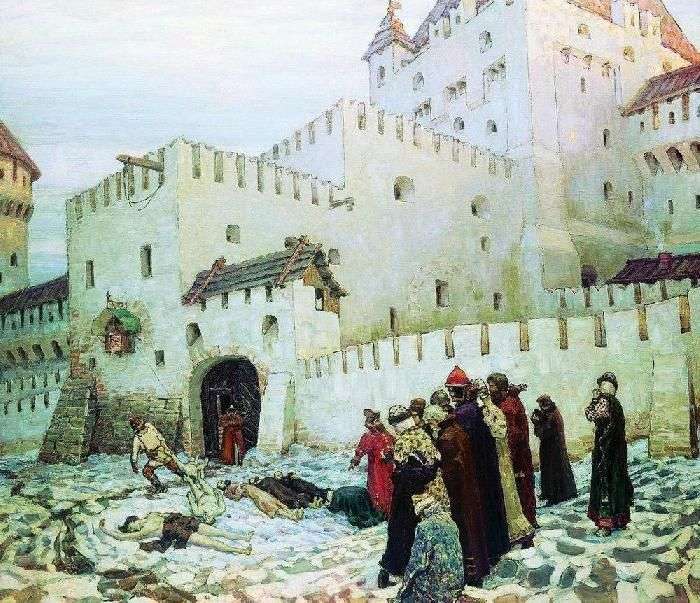 The Moscow torture chamber. The end of the XVI century (Konstantin-Eleninsky gate of the Moscow prison at the turn of the XVI and XVII centuries) by Apollinarius Vasnetsov
The Moscow torture chamber. The end of the XVI century (Konstantin-Eleninsky gate of the Moscow prison at the turn of the XVI and XVII centuries) by Apollinarius Vasnetsov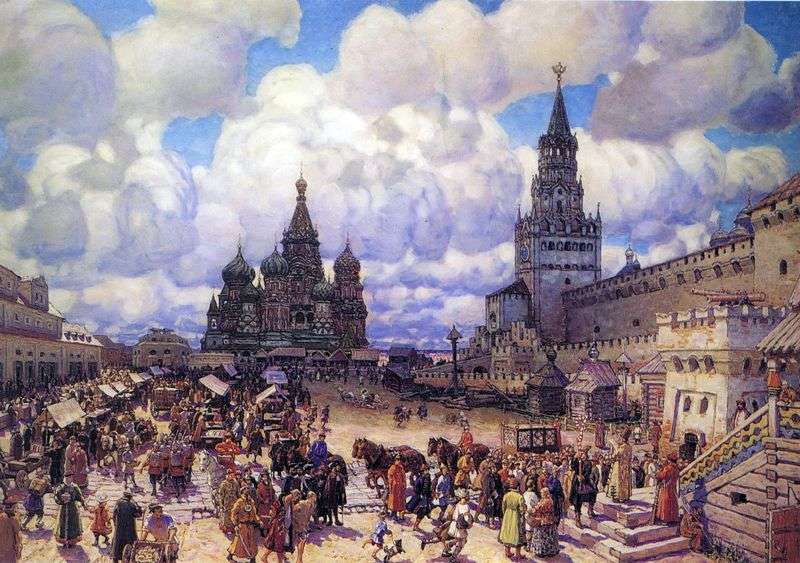 Red Square in the second half of the XVII century by Apollinarius Vasnetsov
Red Square in the second half of the XVII century by Apollinarius Vasnetsov The Moscow Kremlin under Ivan Kalita by Apollinarius Vasnetsov
The Moscow Kremlin under Ivan Kalita by Apollinarius Vasnetsov Winter. The Rostov Kremlin by Ivan Goryushkin-Sorokopudov
Winter. The Rostov Kremlin by Ivan Goryushkin-Sorokopudov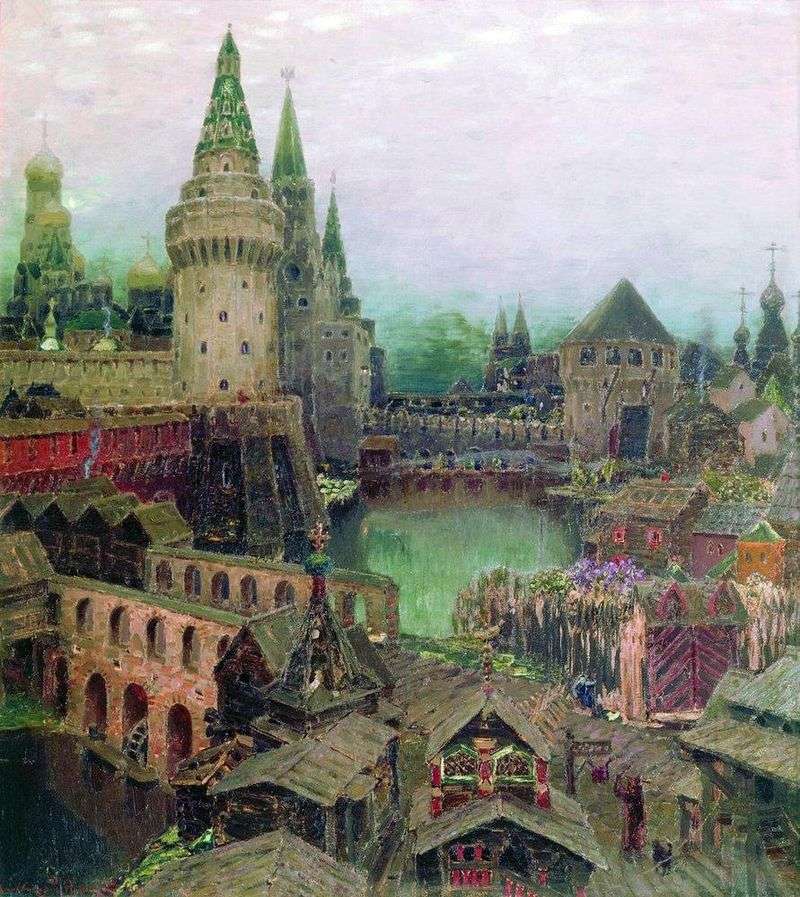 At dawn at the Resurrection Bridge. The end of the XVII century by Apollinarius Vasnetsov
At dawn at the Resurrection Bridge. The end of the XVII century by Apollinarius Vasnetsov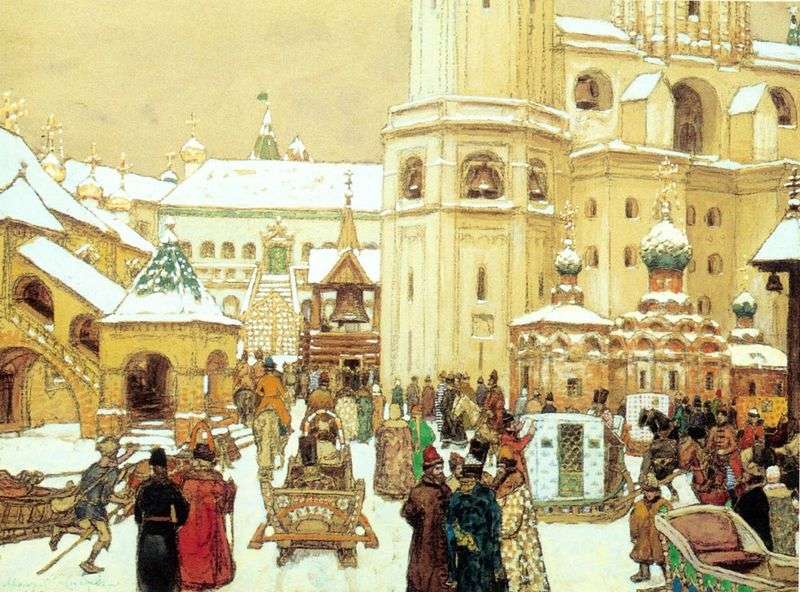 The Square of Ivan the Great in the Kremlin. XVII century by Apollinarius Vasnetsov
The Square of Ivan the Great in the Kremlin. XVII century by Apollinarius Vasnetsov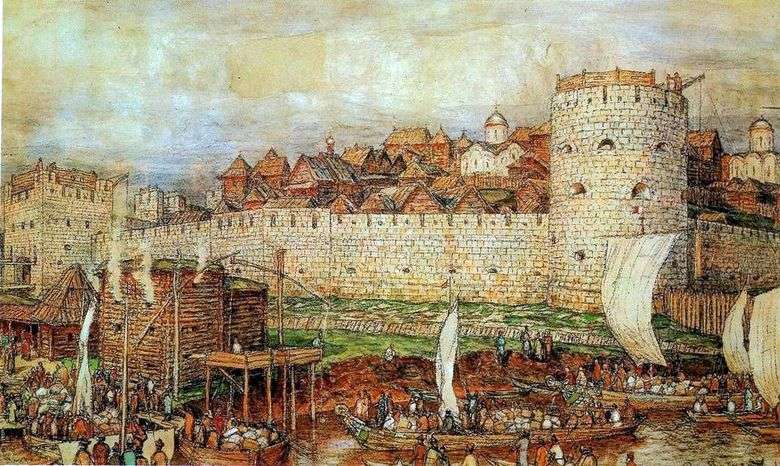 Kremlin de Moscú con Dmitry Donskoy – Apollinary Vasnetsov
Kremlin de Moscú con Dmitry Donskoy – Apollinary Vasnetsov